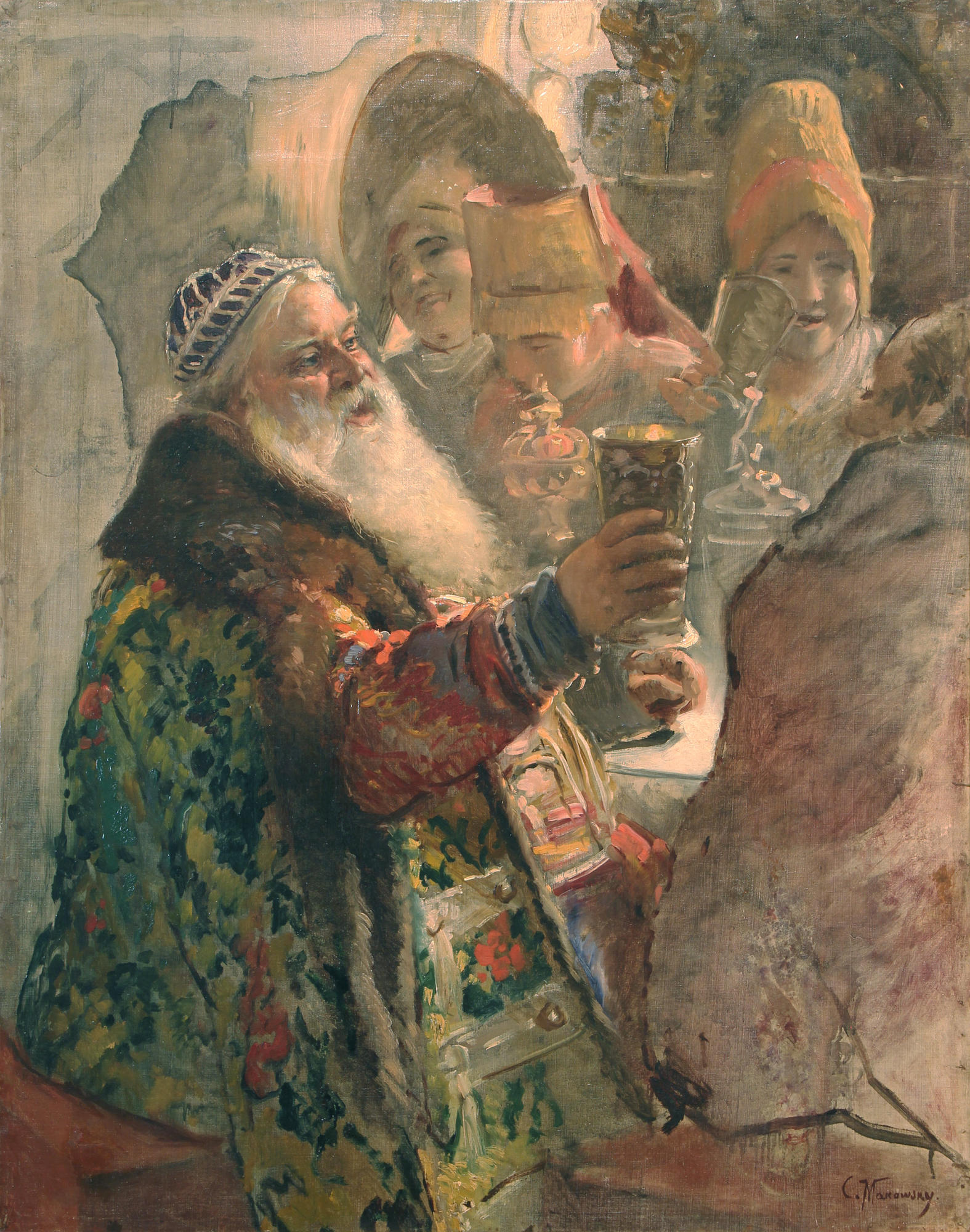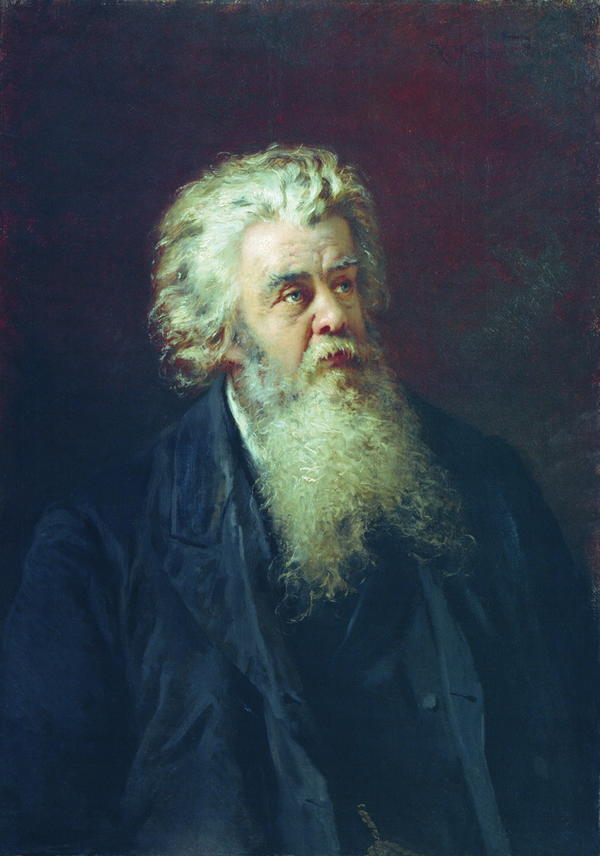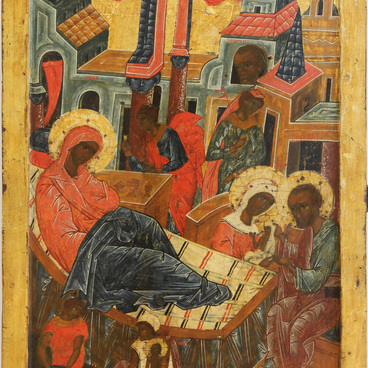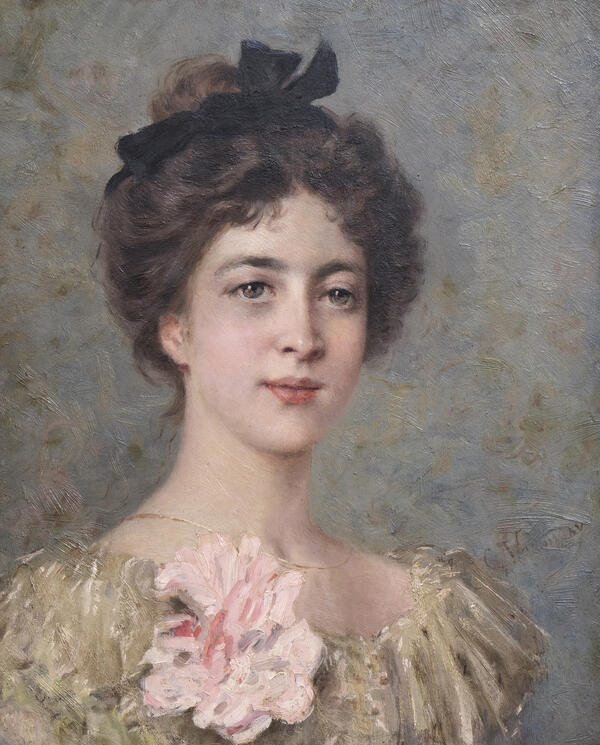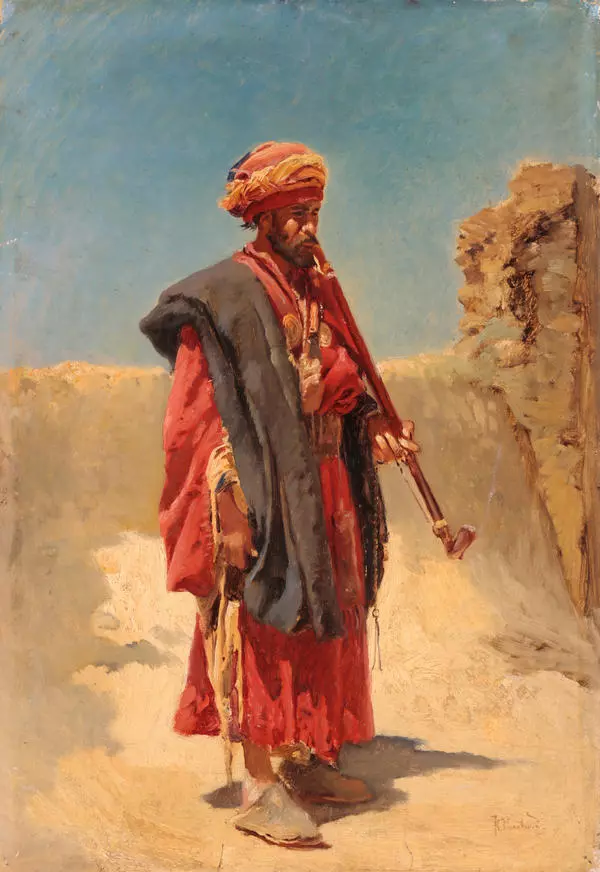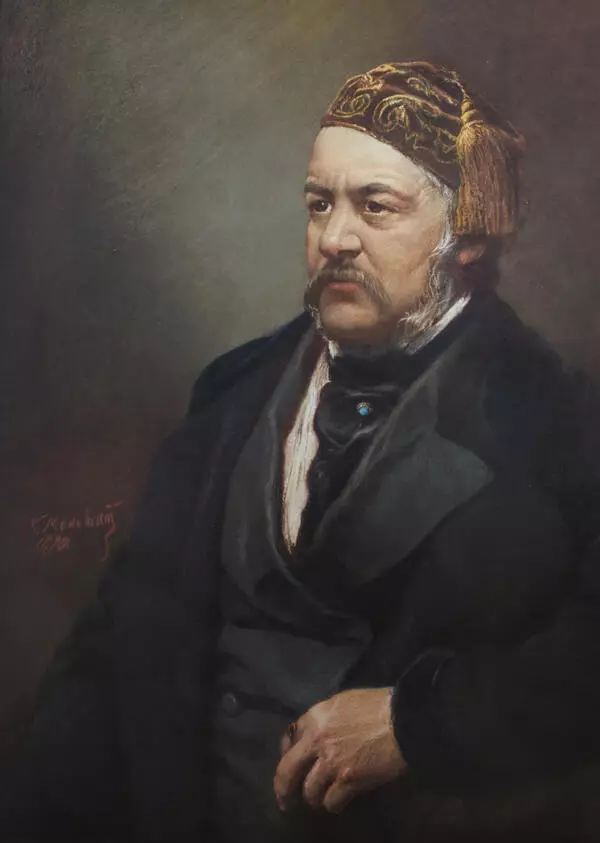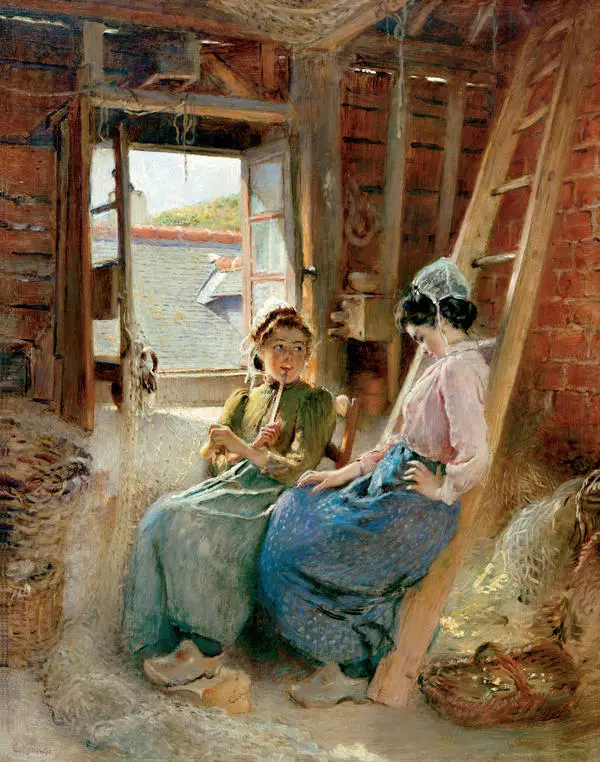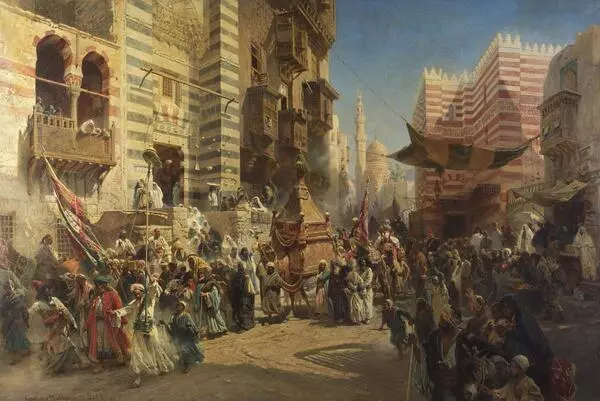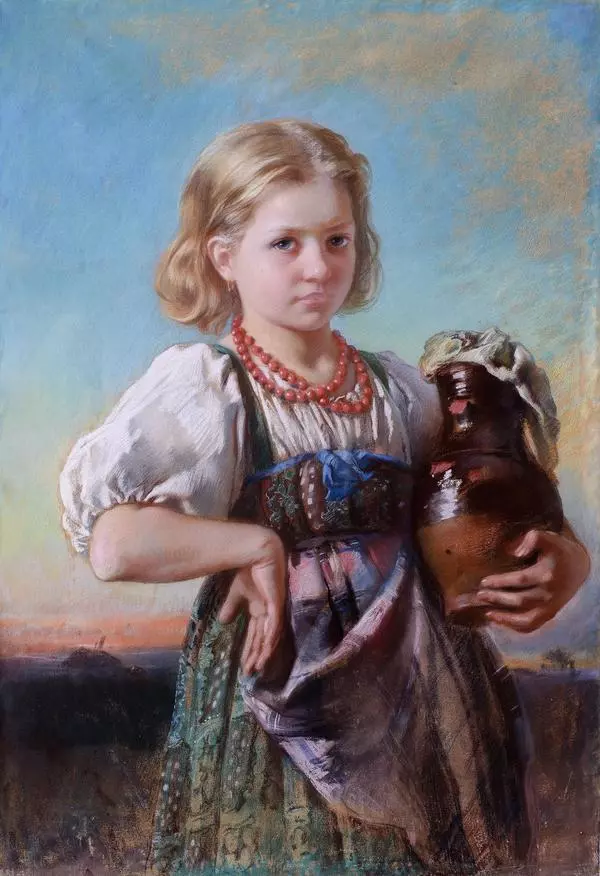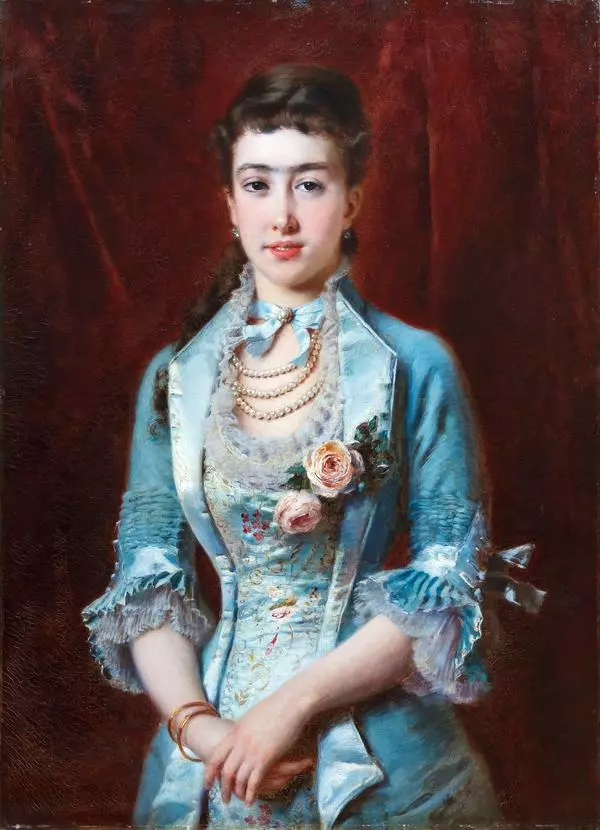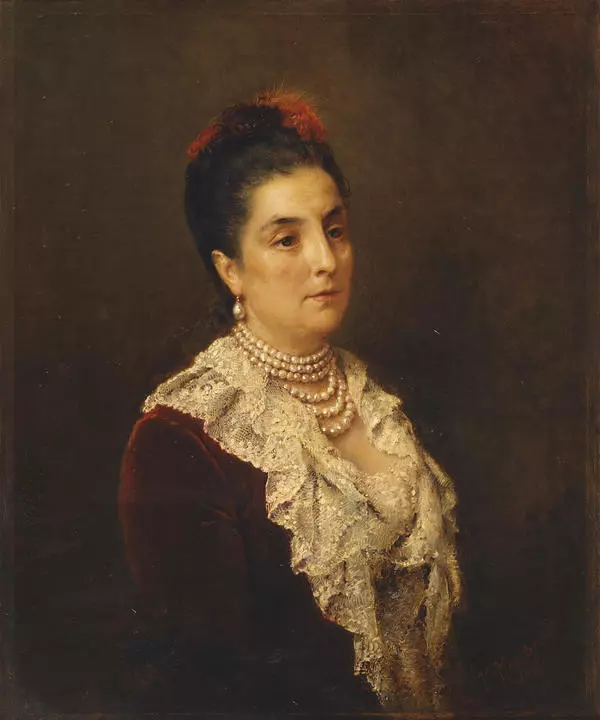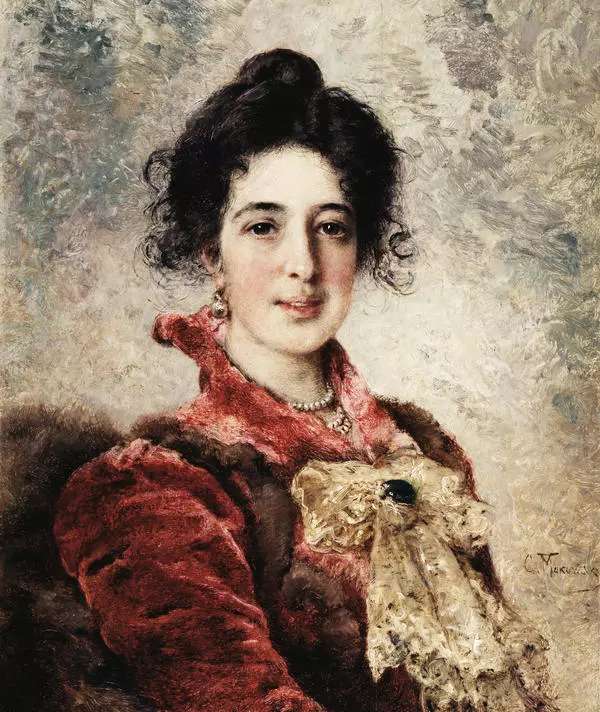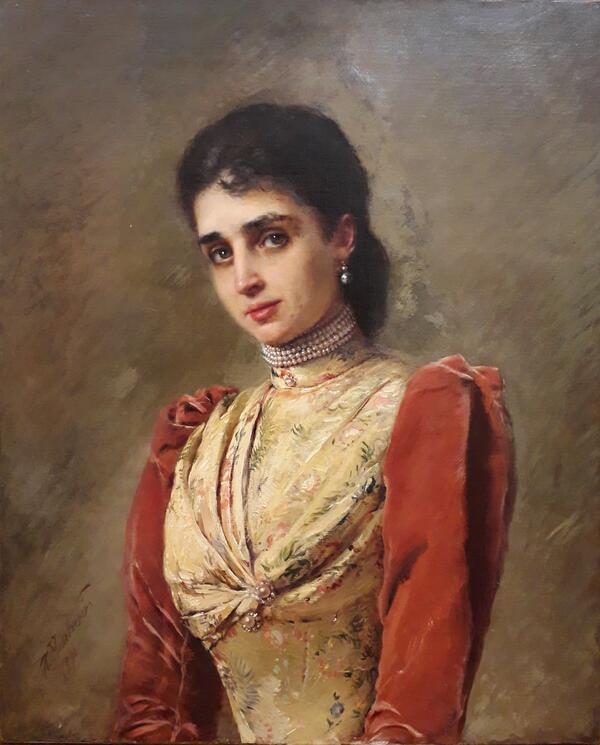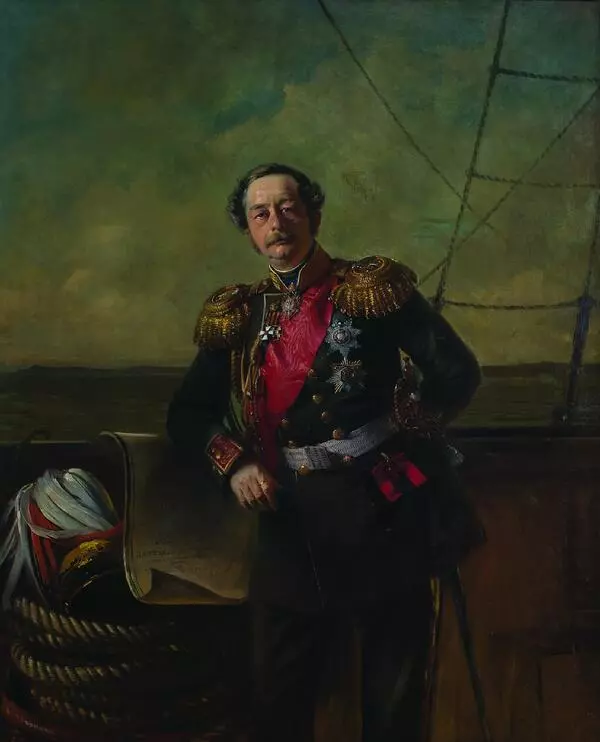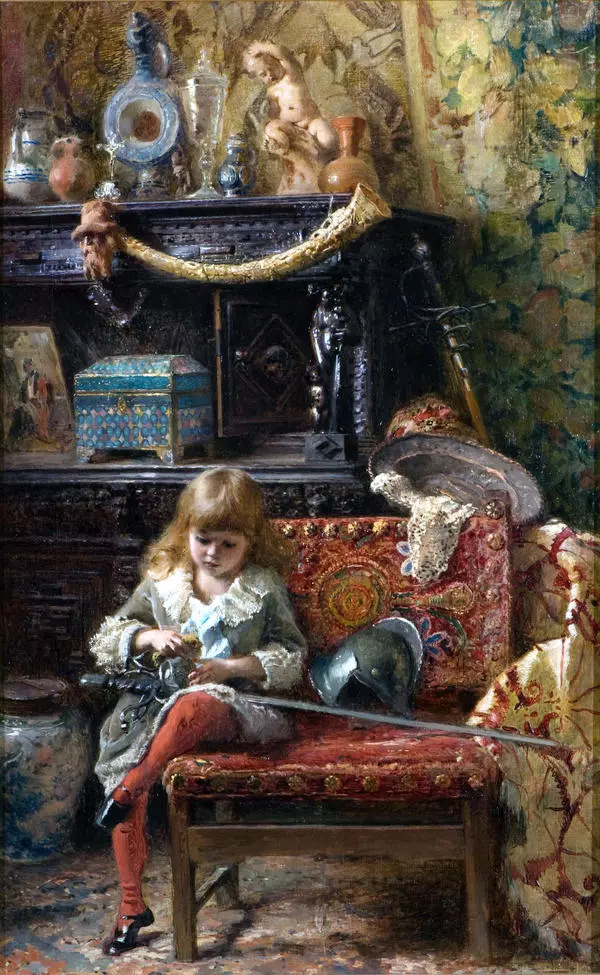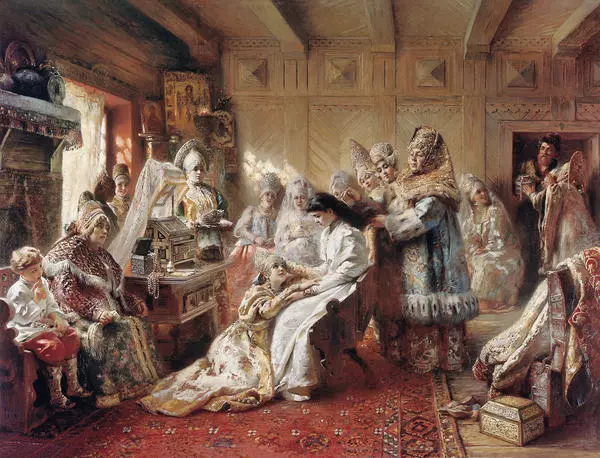The Boyar with the Cup painting is Makovsky’s sketch to the large-scale canvas Boyar Wedding Feast in the 17th Century. It took Makovsky several years to prepare sketches for this picture, including the painting from the collection of the State Art Museum.
#1

Makovsky K.Y.
Boyar with the Cup
#2
#3
About the picture
#4
All clothes and jewelry worn by the characters, as well as the dishes on the table, are exhibits from the artist’s personal collection. He collected ancient boyar pinafores and sleeveless jackets, headbands and kichka hats, precious earrings and buttons, as well as furnishing items such as bronze chandeliers and candlesticks, majolica panels and carved caskets, cups and trays encrusted with precious stones.
#5
Portrait of Prince Pavel Petrovich Vyazemsky. Konstantin Makovsky. 1880s. Source: wikipedia.org
The artist often held musical parties in his workshop. He took out his rarities, put them on guests and sketched them like that. For authenticity, the walls were hung with tapestries of the 17th century and illuminated in the old-time manner.
#6
The boyar depicted in the sketch is raising a silver cup. If you look at the full version of the painting, you can understand that this is the main, final toast: on the left side there is a servant bringing out a baked swan on a tray, the traditional last dish of a wedding feast.
#8
The artist completed the painting by 1883. It became an apple of discord in the Association of Itinerants where he had been a member since 1870.
#7
Many quarreled with the author, and the main ideologist of the Association, Ivan Kramskoy, even stopped talking to him. The matter was that Makovsky refused to exhibit the Boyar Feast at the next traveling exhibition. The painting was shown at the World Exhibition in Antwerp in 1885. Makovsky was awarded a gold medal there. Emperor Alexander III wanted to buy the painting, but American jeweler Charles William Schumann offered a better price paying $15,000 for the canvas.
In those years, the amount was equal to the annual income of a major Russian official. Also, the Boyar Feast was shown in Chicago, Detroit and San Francisco. Russian-style dress became a fashion overseas. Makovsky was called “the Russian Rubens”, and the American President Theodore Roosevelt asked him for a portrait. The jeweler Schuman used the Boyar Wedding Feast in the 17th Century as an advertisement for his stores.
#9
State Museum of Fine Arts of Khanty-Mansiysk
читать дальшескрыть
00:00
00:00
1x
Boyar with the Cup
Время создания
1880’s
Размер
124,3x97,2 cm
Техника
Canvas, oil
3
Открыть в приложении
Поделиться
